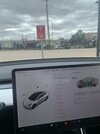Here's hoping! See article for details
Electrek obtained internal Tesla documents that details a new process being put in place to inspect salvaged Tesla vehicles and give them back access to fast-charging.
In the document titled “Salvaged-Titled Vehicle Fast Charging Safety Inspection,” Tesla explains a two-step process that involves inspecting the high-voltage battery pack and all the components related to charging.
If the car passes the inspections, Tesla will reenable fast charging, and if it doesn’t, the company will offer repairs.



